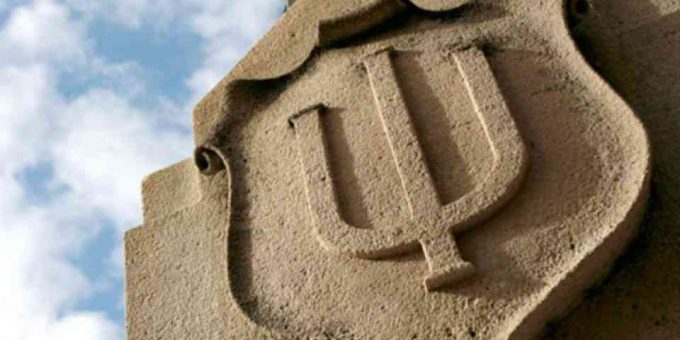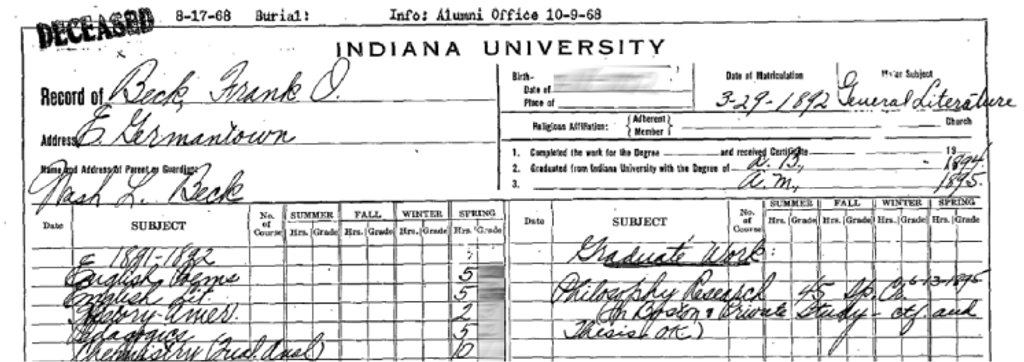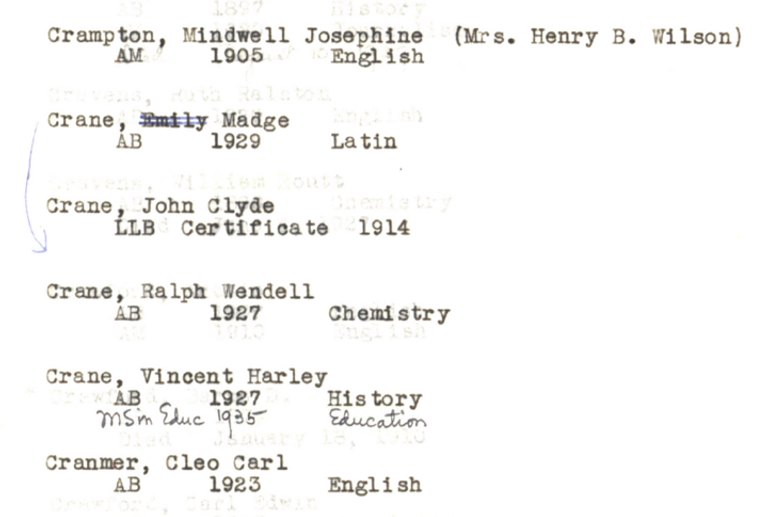
BLOOMINGTON – For years, handwritten records and large books of onionskin paper detailing Indiana University Bloomington’s earliest graduates were kept locked inside a vault on campus. A recently launched, the first-of-its-kind online database makes it easier for people to access information about when alumni graduated and what they studied.

The IU Bloomington Degree Compendium contains the names, graduation years, and degrees awarded to graduates from the classes of 1830 to 1890. The database will eventually be expanded to include information about all IU Bloomington graduates.

“The biggest product we have is our graduates,” said IU historian and professor James Capshew. “There are a lot of families who have traditions of going to IU for generations. For people who are interested in family history and genealogy and getting information about earlier graduates, this is a wonderful resource.”
Former associate vice provost and registrar Mark McConahay was an enthusiastic advocate for the project, and he helped make it possible by securing funding. Building the degree compendium took an extraordinary amount of meticulous work from the Office of the Registrar, which started with digitizing and verifying thousands of handwritten records.
All academic records before 1966 were paper-based, so the office used funding from the IU Bicentennial to hire a third-party vendor that digitized and indexed records for more than 98,000 students, including paperbound degree cards, official lists of graduates, and commencement programs. The information was then put into a spreadsheet, and staff compared the data with the original records to ensure it was accurate.

“You can imagine, with handwriting in the 1800s, some of the translations that came out were pretty interesting,” said Lisa Mosele Scully, who helped lead the project before recently retiring from her role as senior associate registrar and manager of academic records.
Once the data was digitized and cleaned up, the staff went through each record to identify any holes or add more information, sometimes using as many as six sources to ensure the record was complete. They used newspaper clippings, military records, U.S. Census data, and cemetery information to fill in gaps about some graduates. The finalized records were then put into the degree compendium.

“Once you start diving into this data, you don’t want to come up for air,” said Ethan Bernhardt, senior associate director of reporting services in the Office of Enrollment Management. “It’s a very rewarding process. You feel like you’re an archaeologist using your little brush and hammer to reconstruct the past.”

In addition to the public search function, IU faculty and staff can request access to protected data that includes information like a graduate’s birth and death date and location. Additional biographical information is available for IU’s first 200 graduates, who were all men. A project is underway to compile biographies of the first 200 women to graduate from IU, as well.
“I feel like I know these people, and I can imagine how gratifying it must be for someone whose grandparents or great-grandparents met at IU to have that direct connection with your own story,” Scully said.
The data helps tell the story not only of each graduate but of IU Bloomington as a whole. The university’s first graduating class included only four white men; more than 200 years later, classes are much larger and more diverse. IU awarded more than 21,000 degrees across all of its campuses in spring 2021, and that fall a record 29 percent of enrolled students at IU were students of color.
IU Bloomington has awarded more than 550,000 degrees in its 202-year history, and the university as a whole will award its 1 millionth degree in the next two or three years.
The work of telling the university’s story through students’ accomplishments continues as Bernhardt and others verify the next batch of graduate data for the compendium.
“I’m hoping the compendium will stimulate interest in IU’s past, especially for anyone associated with IU for any length of time,” Bernhardt said. “Once all the data’s there, it will be quite a powerful tool for both the public and researchers to learn more about our history.”
Information: Barbara Brosher, communications consultant, News at IU
Communications Consultant



